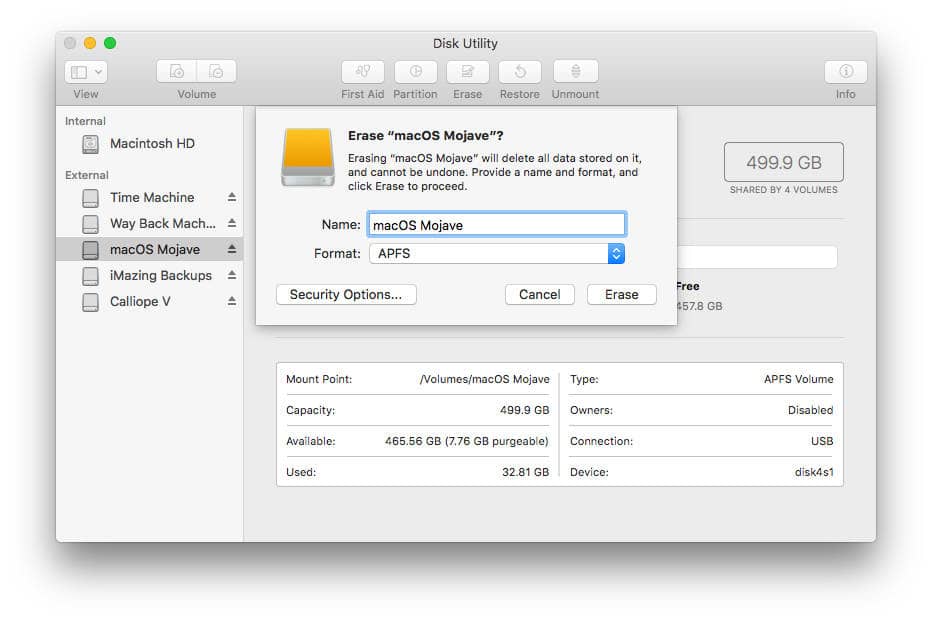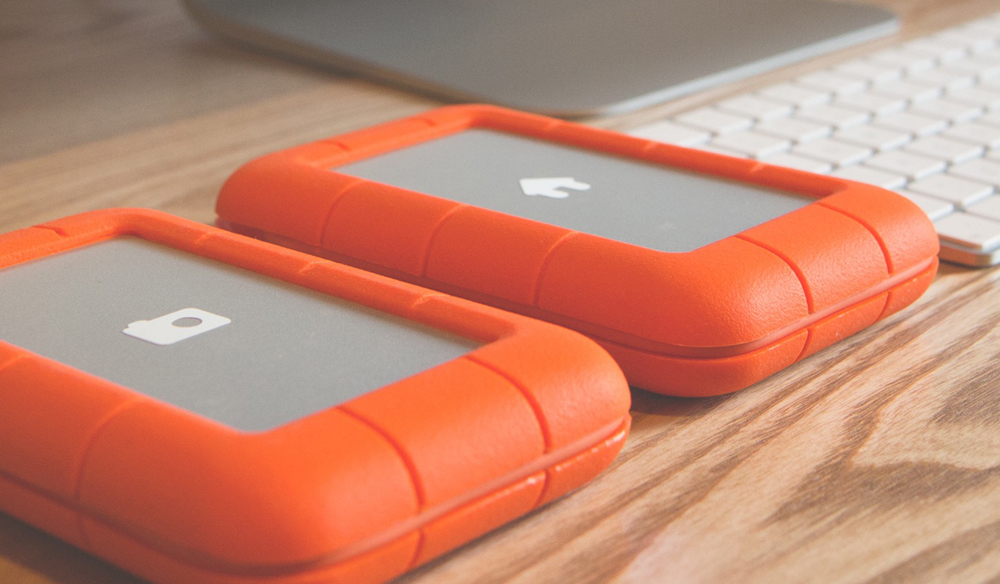Summary: This post will show you solutions to fix the Mac not recognizing internal hard drive issue. Also, you can learn how to recover lost data from unrecoginzable Mac internal hard drive with data recovery software for Mac - iBoysoft Data Recovery for Mac.

Nov 14, 2019 To run Fist Aid on an external hard drive: Open Disk Utility. You can searching for it using Spotlight Search or via Finder Application Utility; Check on your external hard drive, click the First Aid tab and select Run to start running diagnostics. If First Aid successful in fixing errors, the external drive should be available to mount. Jan 09, 2020 If your Mac is having problems identifying a flash drive it may be that you did not properly eject a drive that was previously connected to your machine. Failure to eject a USB drive before pulling it out of the port can cause the OS to view the port’s status incorrectly and may impact its ability to be identified and accessed. Sep 05, 2013 It appears that you have formatted your external hard drive in Mac OS Extended format, which is not supported in Windows. Windows operating systems will support FAT 32, NTFS file format. I would suggest you to follow these steps. Connect the external hard drive to your Mac and copy the important data to the Mac PC. Dec 11, 2015 Open Disk Utility and see if the hard drive shows there. If so, run repair disk until you get no errors. Try the install again. If that doesn't work, reformat the drive using Disk Utility/Erase Mac OS Extended (Journaled), then click the Option button and select GUID. Go to Finder Preferences Sidebar tab and select 'Hard disks'. Then your internal hard drive should be showing up in the Finder. Instead, if the Mac doesn't display your external hard drive, you can check 'External disk' in this tab also to make it visible.
- Mar 17, 2020 One of the major reasons that your external hard drive not mounting on Mac is the virus threat. The moment your plug in your it to Mac, it spreads across the entire network of the drive resulting to a data loss. Virus such as Trojan gets to HDD via infected.
- Right-click Start Open Disk Management Right-click device and select 'Format'. Hard drives, be it new or old, internal or external, may not show up in File Explorer or (and) Disk Management after you connect the device to your computer.
Usually, the internal hard drive is the statup/boot drive for a Mac. It not only loads the operating system but also is responsible for storing data. Therefore, it is frustrating if your Mac doesn't recognize the internal hard drive and you can't access the data on this drive. What's worse, when you want to recover lost data, you find that you don't have any data backup. Luckily, according to your situation, this article will provide 4 feasible solutions for you to fix Mac not recognizing the internal hard drive.
Scenario 1: The internal hard drive can be recognized by Disk Utility
If your Mac doesn't recognize the internal hard drive, you can check if Disk Utility under Recovery Mode is able to recognize it. This really matters because if you can see the drive but the internal hard drive is not mounted in Disk Utility, your internal hard drive has no hardware problem and you can try the following solutions to fix your issue.
Solution 1: Repair with First Aid in Disk Utility
The issue that Mac doesn't recognize the internal hard drive could be fixed with First Aid under Recovery Mode. macOS Recovery is part of the built-in recovery system of your Mac, from which you can start up and use its utilities to repair certain logical errors of the internal hard drive.
Step 1: Restart your Mac and immediately press and hold Command + R keys to get into macOS Recovery mode, then release the keys when you see the Apple logo.
Step 2: Select Disk Utility in macOS/Mac OS X Utilities and click 'Continue'.
Step 3: Select the internal hard drive and run First Aid to check and repair errors in this drive.
Solution 2: Try to boot in Safe Mode
Booting in Safe Mode will check the errors in the directory of your internal hard drive. To boot in Safe Mode, you need to restart the Mac and hold 'Shift' immediately, and release it until you see the login window. When you see a 'Safe Boot' message on the startup window, you can restart the Mac and try to recover data from this internal hard drive.
Solution 3: Recover lost data and erase the unrecognizable internal hard drive
If the internal hard drive is not recognized by your Mac still, then the file system of this internal hard drive could have corrupted. Is there any other way that you can access the data on this unrecognizable internal hard disk? Of course. You can recover lost data from this unrecognizable internal hard disk with Mac data recovery software like iBoysoft Data Recovery for Mac. Then, you can reformat this internal hard drive so that you can use this drive again.
iBoysoft Data Recovery for Mac is professional Mac data recovery software. It can not only recover lost data from a Mac that is unbootable, but also recover documents, photos, emails, music, etc. from formatted/unmountable/inaccessible external drives. This software supports recovering data from encrypted APFS, APFS, HFS+, exFAT, FAT32 drives on macOS Catalina/Mojave/High Sierra/Sierra and OS X 10.11/10.10/10.9/10.8/10.7.
Method 1: If you have only one Mac computer
If you have only one Mac computer, please directly run iBoysoft Data Recovery for Mac in macOS Recovery mode and recover lost data from the unbootable Mac computer. This method is greatly recommended because it is easier and more effective.
Method 2: If you have two Mac computers
Step 1: Download iBoysoft Data Recovery for Mac on another Mac, install and launch it.
Step 2: Click iBoysoft Data Recovery at the upper left corner of Mac menu bar and select 'Create Boot Drive'.
Step 3: Insert a USB drive into the healthy Mac computer.
Step 4: Follow the wizard to create a bootable recovery USB drive.

Step 5: After you have completed creating boot drive, insert this bootable USB drive into the failed Mac and press the Power button and Option key (⌥) to start the MacBook up.
Step 6: Select iBoysoft Data Recovery for Mac from the boot options.
Note: If you're running macOS Mojave or earlier, iBoysoft Data Recovery for Mac will launch immediately when your Mac boots up. But, if your Mac is running macOS Catalina, you need two additional steps to launch this program.
span>Step 7: Wait for your Mac to boot up, open 'Terminal' application from 'Utilities' drop-down menu.
Step 8: Run the following command:
Step 9:Follow the wizard to recover lost data from the internal hard drive.
Step 10: Restart the Mac, press and hold Command + R keys immediately to get into macOS Recovery mode.
Step 11: Select Disk Utility in the Utilities and click 'Continue'.
Step 12: Select the internal hard drive and click 'Erase' to reformat this drive.
Step 13: Return to macOS/Mac OS X Utilities in macOS Recovery mode and select 'Reinstall macOS'.
After reinstalling the operating system, this internal hard drive could be showing up again.
Scenario 2: The internal hard drive cannot be recognized by Disk Utility
However, if your Mac can't recognize the internal hard drive, this internal hard drive might have some hardware problems. You can either send it to a local repair store, which could be costly, or say goodbye to this drive and buy a new one.
Posted by Bella Brown to DVD Rip, Apple Resources, Last Updated on Mar.17, 2020
Mac Os External Hard Drive Not Showing
- Hello. I have a problem my portable storage, it's not appearing at all in my mac. Not even in the disk utility. Other USBs and External Hard drives work, but this one does not and it happened just recently. someone here can help me get this to work? - CNET Forum
- I'm having problems with my external hard disk. It was working great all until I accidentally disconnected it without ejecting it. Now it won't show up anywhere on my Mac. It's not on Finder or Disk Utilities or even my System Finder. Any help I can get here will be great! - Apple Support
Format External Hard Drive Mac
External hard drive counts for a lot for Mac users in daily. It helps to clean up Mac startup disk, speed up Mac computers, get rid of any further errors owing to insufficient space etc. Usually, no matter you choose USB, SD card, NAS or superdrive for Mac, when you plug in a portable hard drive to your Mac's USB port you will see it mount on the desktop. You can also see it in the Finder in the left-hand column under Devices. However, there are also times that your external hard drive won't show up on Finder or Disk Utilities. What do you do? Here gives you some solutions for reference and we'll feel glad if they are helpful for you.